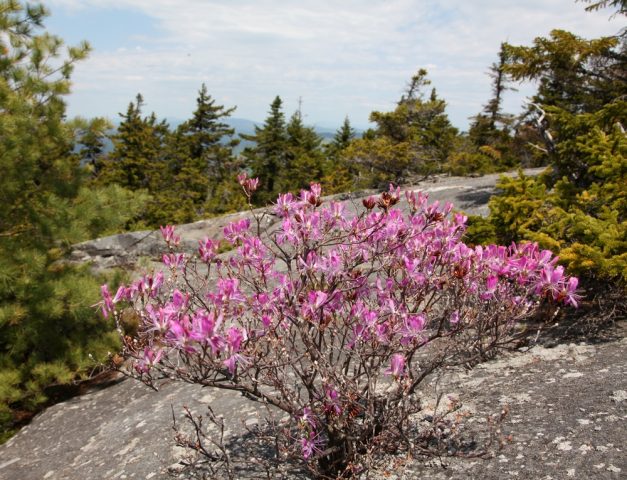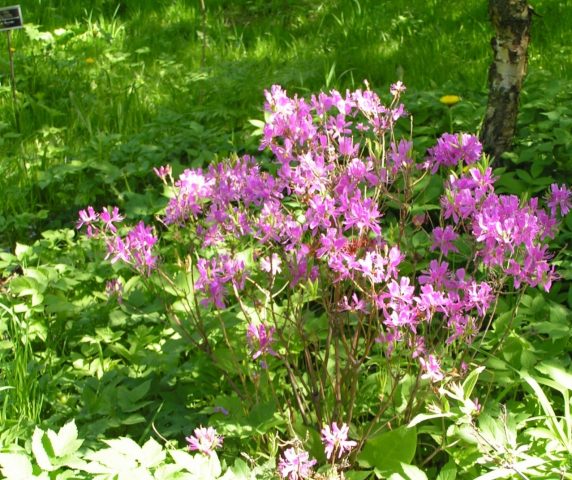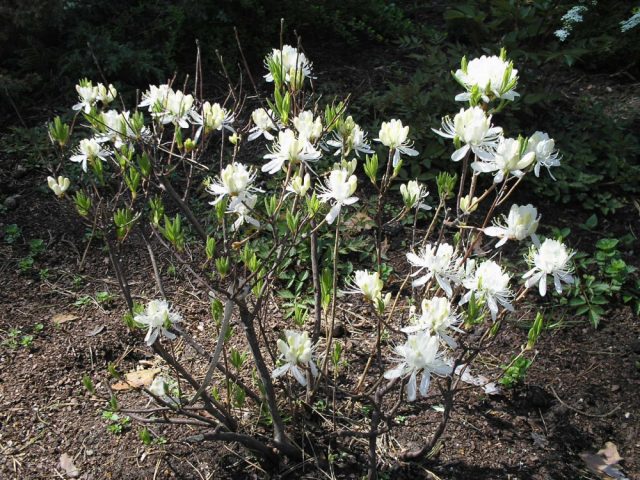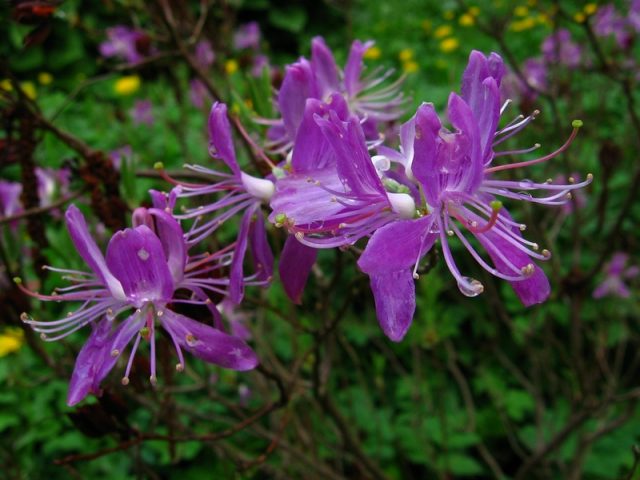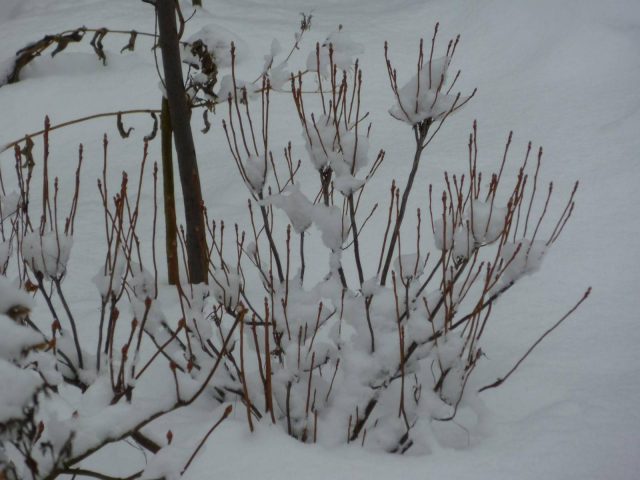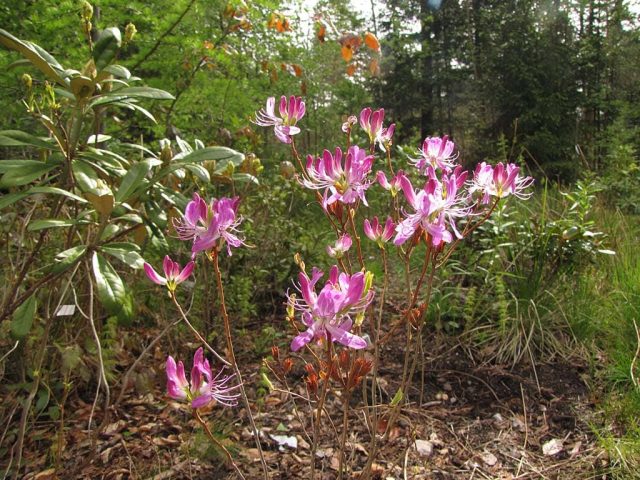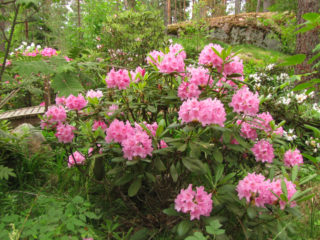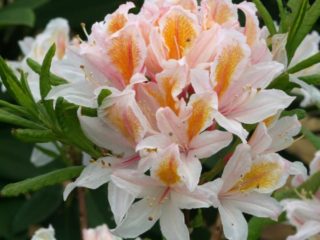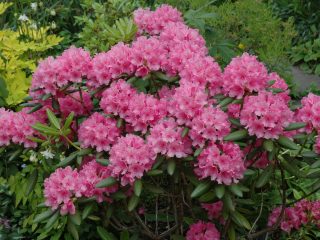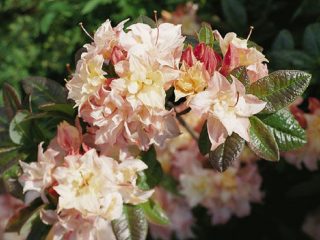Content
Rhododendron Canadian, frost-resistant and unpretentious shrub, with its characteristics is suitable for growing in the middle lane and more severe climates. The homeland of the ornamental plant is wet, swampy areas of coniferous and mixed forests in the northeast of the American continent. Flowers of the Canadian species are often compared to fluttering moths.
Description of canadian rhododendron
The bush of this type of deciduous rhododendron is low, grows to a maximum of 1 m, on average rises to 30-70 cm. Low growth is a sign of the northern origin of an ornamental culture, which has to winter under snow. The Canadian species tolerates frosts - 34 ° C. The compact and dense crown of a rhododendron from twisting branches extends up to 70-100 cm in diameter. The plant branches densely, young shoots are reddish, old ones are gray-brown. For a year, the growth of thin, but flexible and strong branches is 6-8 cm.The root system of the Canadian rhododendron usually occupies the perimeter of the trunk circle, deepens to 40 cm.
Elliptical narrow leaves are dark green with a bluish tint. Short, but densely pubescent leaf blades of Canadian rhododendron 5 cm long, 2 cm wide. The apex of the leaf is pointed. In autumn, the color of the leaves of the decorative Canadian species changes to yellow-red.
Two-lipped corolla of Canadian rhododendron with three petals, 2-2.5 cm in diameter. Consists of strongly separated narrow parts, which gives the impression of an elegant and graceful airiness of the flower. Buds of 3-8 pieces, tightly collected in inflorescences 5-8 cm wide, do not smell. The petals are pink-lilac, hybrid forms with different shades of pink, white, cream. Numerous long stamens give fluffiness to the inflorescence of the Canadian species. The unpretentious Canadian rhododendron blooms in the second decade of April or early May, when the leaves have not yet blossomed. The rose bush attracts everyone's attention in early spring. Flowering lasts up to two to three weeks.
Varieties of canadian rhododendron
In addition to the usual pink color of the Canadian species, shrubs with white petals, in which the structure of the corolla is identical, are spread. Based on the hardy rhododendron, American breeders have created many varieties with different colors - from lilac and pink to white, yellow or orange. Hybrids of the Canadian rhododendron from the USA Rosy Lights, Golden Lights, Mandarin Lights and others - with fragrant flowers, grow quickly and begin to bloom earlier than the mother species. In new varieties, the leaves are larger, the crown is more spreading. Flowering takes place in May-June. In domestic nurseries, these forms of the Canadian species are extremely rare.
Some online stores of garden plants offer Canadian rhododendron Violetta as a product from Finland. The petals of the variety are dull purple. The hybrid was bred in the Czech Republic on the basis of dense and reddening rhododendrons, belongs to the evergreen species.The complex Czech hybrid Violetta, like some other varieties of the same origin, was tested by Moscow scientists and recommended for cultivation in the country.
Planting and caring for Canadian rhododendron
Like most shrubs, Canadian seedlings are best moved in early fall or spring, as soon as the soil can be dug.
Selection and preparation of the landing site
The species of northern origin is sometimes placed in wetlands or with high groundwater. The plant is sun-loving, tolerates partial shade. To maintain the decorative effect of the bush, a windless area is chosen. The successful development of Canadian rhododendron requires careful preparation of the required substrate. The prepared pit is filled with soil with a slightly acidic reaction - pH 5-6.4:
- 1 part of the land from coniferous forest or soddy loamy soil;
- 2 parts of high moor, sour peat;
- 1 part sand;
- 1 part leaf compost.
Seedling preparation
Most often, young plants are purchased in nurseries, they are usually planted in containers. By placing the container with rhododendron in a large container of water to easily remove the roots, the earthen lump is destroyed. The roots of the seedling are straightened and placed in water prior to planting.
Landing rules
When planting a Canadian species, adhere to the recommendations:
- a hole for a medium-sized bush is dug with a diameter of 50 cm to a depth of 30 cm;
- the distance between the bushes is 30-40 cm, since in a group planting the Canadian species is more decorative;
- a drainage layer is laid in a low-lying area;
- the seedling is placed on the substrate so that the root collar is above the surface;
- the trunk circle is mulched with leafy forest humus, peat or needles.
Watering and feeding
Northern rhododendron prefers moist soil, although it tolerates a short dry period. In the conditions of the middle lane, the seedling is watered, an adult bush does without watering, with the exception of a prolonged drought. For the rhododendron, they store water - rain or river. In wells and wells, water is often alkaline, which will harm acidophyte. Regularly, after 2-3 years, it is watered with acidified water mixed with:
- sulfuric acid from batteries;
- citric acid;
- vinegar.
The bushes are fed with special mineral complexes for conifers only until the end of June. Humus and other organics are not recommended. A special compost is prepared from needles and leaves for mulching in spring and autumn. Mulch made from forest residues plays a double role for rhododendrons:
- retains moisture in the upper layer of the soil, where thin root processes are located;
- is a natural fertilizer, enriching the soil with elements necessary for nutrition.
The trunk circle is not dug up in order to preserve the mycorrhiza.
Pruning
The compact and dense crown is not cut, only damaged and broken branches are removed. If desired, the rhododendron is slightly shaped. Such work is carried out in early spring. Sanitary pruning is possible in early fall and spring.
Preparing for winter
In autumn, the mulch layer is replenished: with peat, compost from leaves and needles, pine sawdust. Shelter for Canadian rhododendron is not required. The kidneys do not burn out under the sun. The shrub can be damaged only after early warming in February, March, after which frosts are possible. Flower buds will begin to develop, then freeze.
Reproduction
Dikoros propagates by seeds, varieties - by layering. Seeds are sown freshly harvested, in the snow, in November-December. For the substrate, they buy a special soil for azaleas, which is mixed with sand, and snow is poured on top. Seedlings appear at the end of winter, they are provided with illumination. Plants are kept in containers for 2 years. Six months later, they dive into another common container, observing an interval of up to 2 cm.The second transplant is carried out next spring, placed at a distance of 4 cm. A year later, the seedlings are transferred to the nursery. Young plants bloom late - at 5-7 years of development.
For layering, the lower branch is instilled, the top is left above the ground. The bark from the deepened section of the shoot is slightly ripped off, the branch is fastened with a bracket. Make sure that the soil is constantly moist. The sprouts are moved to a new place only after a year.
Cuttings are carried out in June, planted in a substrate of peat and sand. Rooting occurs in 45-50 days. Up to 85% of cuttings take root.
Diseases and pests
Rhododendron canadian is rarely affected by fungal diseases. If the infection is determined, fungicides are used:
- "Speed";
- Topaz or others.
Leaves can be damaged by leaf-eating insects. With their high activity, insecticides are used.
Conclusion
Canadian rhododendron is planted as a tapeworm on lawns, while 3-4 miniature bushes are placed for greater effect. The decorativeness of a low plant will be ensured throughout the warm season by bluish-gray leaves, and in May - the flowering of graceful buds.
